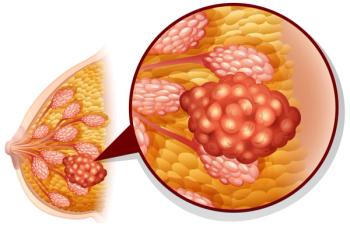
- Oncology Vol 29 No 4_Suppl_1
- Volume 29
- Issue 4_Suppl_1
(P136) Quantitative Measurement of Contrast Enhancement in Myxoid Liposarcomas: Response to Neoadjuvant Therapy With Volumetric and Pathologic Correlates
MLs exhibit favorable clinical responses to NeAT by size criteria; however, this may not account for biological tumor changes. We present a technique for quantifying changes in contrast enhancement that may better predict biological tumor response.
Tobias R. Chapman, MD, MPharmacol, George Jour, MD, Darrin J. Davidson, MD, MHSc, FRCSC, Robin L. Jones, MD, MRCP, Ben Hoch, MD, Gabrielle Kane, MD, Edward Y. Kim, MD; University of Washington
PURPOSE: Clinical assessment of response to neoadjuvant therapy (NeAT) in soft tissue sarcoma (STS) is often based on Response Evaluation Criteria in Solid Tumors (RECIST) criteria, which may not reflect changes in tumor biology. Myxoid liposarcomas (MLs) have favorable responses to NeAT by RECIST and exhibit contrast enhancement on T1-weighted, postcontrast magnetic resonance imaging (MRI) (T1+). Tumor response may also manifest as changes in contrast enhancement. We present a quantitative assessment of contrast enhancement and correlate these findings with volumetric and pathologic data.
MATERIALS AND METHODS: After institutional review board (IRB) approval, 67 patients from 1999–2013 were identified with ML. Five patients received neoadjuvant radiation therapy (RT) with MRI prior to each NeAT and surgery. Tumor volumes (TVs) were contoured on the relevant T1+ MRI. Mean contrast enhancement (MCE) was calculated by subtracting the T1 precontrast MRI signal from the T1+ MRI after normalization to normal muscle. Percent change was calculated using MIM software. Specimen analysis was performed by an STS pathologist.
RESULTS: The majority of patients was male, and most tumors were of the limb, low-grade, large (> 5 cm), and deep (T2b). Three patients received neoadjuvant chemotherapy. Pre- and postchemotherapy mean MCE values were 71% (range: 54%–82%) and 24% (range: 2%–47%), respectively. The mean postchemotherapy change in TV was −0.2%. All patients received neoadjuvant RT, with pre- and post-RT mean MCE of 50% and 47%, respectively. Mean post-RT change in TV was −64%. Two patients received neoadjuvant RT alone, with pre- and post-RT mean MCE of 95% and 23%, respectively. The mean post-RT-alone change in TV was −72%. All patients had significant pathological responses to NeAT, with > 80% treatment effect. With median follow-up of 23.5 months, there were no local or distant recurrences.
CONCLUSION: Patients with ML treated with neoadjuvant chemotherapy exhibit decreased MCE, with no associated change in TV. Subsequent RT postchemotherapy causes no additional change in MCE but does cause tumor shrinkage. Treatment with RT alone causes changes in both. These data from ML patients with excellent pathologic responses to NeAT suggest that differential tumor responses may not be captured using size criteria alone and that responses to chemotherapy may be better evaluated using MCE.
CLINICAL RELEVANCE/APPLICATION: MLs exhibit favorable clinical responses to NeAT by size criteria; however, this may not account for biological tumor changes. We present a technique for quantifying changes in contrast enhancement that may better predict biological tumor response.
Proceedings of the 97th Annual Meeting of the American Radium Society -
Articles in this issue
Newsletter
Stay up to date on recent advances in the multidisciplinary approach to cancer.





















































































